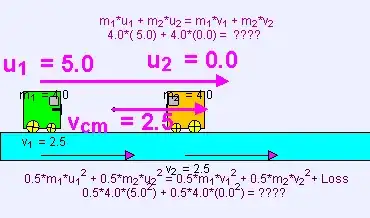In general, the elasticity of a collision is dependent on the properties of the colliding objects. In a perfectly elastic collision, no kinetic energy is dissipated, which means the collision creates no heat, no sound, etc. In a perfectly inelastic collision, the maximum possible amount of kinetic energy is dissipated as heat, sound, etc. This corresponds to the two particles sticking together after the collision.
In real life, most collisions are neither perfectly elastic nor perfectly inelastic, but rather somewhere in the middle. (One major exception to this is gas molecule collisions, which are perfectly elastic.) Some objects collide nearly perfectly elastically, such as billiard balls or steel ball bearings, while others collide nearly perfectly inelastically, such as balls of putty or mud. Without knowing the specific properties of the colliding objects (such as their elasticity, etc.), it is impossible to predict how elastic a collision will be.
